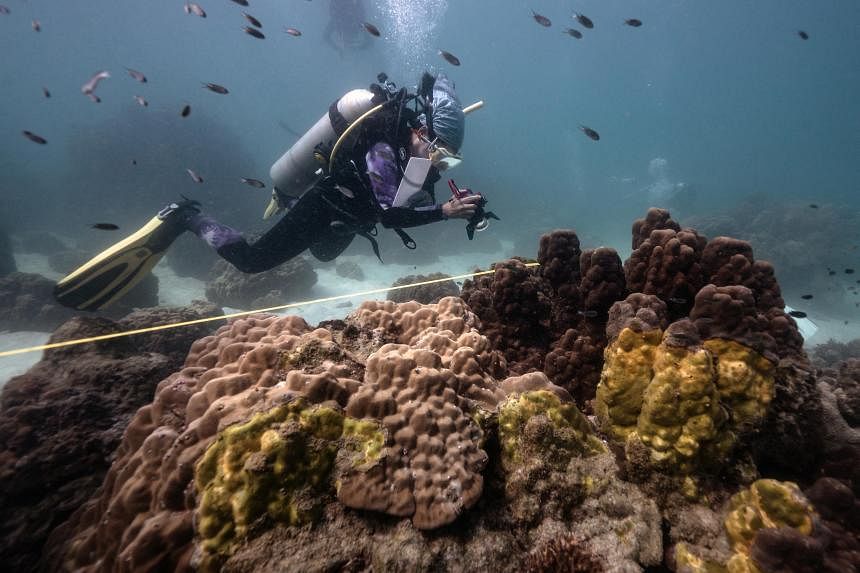WASHINGTON – In addition to oceanic heatwaves like those that struck Florida waters this past summer, coral reefs – home to a quarter of all marine life – also suffer from disturbance and pollution hampering their resilience.
Coral reefs can and do recover from the bleaching that occurs when waters warm and become more acidic, but most in Florida have not. Reducing other threats would strengthen resilience.
But the ultimate solution must be to reduce the greenhouse gas emissions that drive global warming, experts on both sides of the world, facing different yet similar conditions, told The Straits Times’ Green Pulse podcast.
Based in Key Largo, Florida, Ms Jennifer Pollom, executive director of the Ocean Conservation Foundation and director of conservation for Rainbow Reef Dive Centre – the largest dive operator in the Americas – saw first-hand this past summer the damage done to coral reefs in a warming planet.
“We have month-over-month photographs of just really some massive deterioration in bleaching of the elkhorn and staghorn in particular,” she said. Elkhorn and staghorn corals, named as such due to their resemblance to deer antlers, are found in shallow waters across the Caribbean.
“It’s really, really stark evidence” she said. “We’re seeing some of these elkhorn colonies that are decades old, in some cases hundreds of years old, that are entirely bleached. And now that it’s into November, and we’re starting to take a look at what’s recovering, they’re not recovering.”
Dr Jani Tanzil, a marine ecologist and facility director at St John’s Island National Marine Laboratory in Singapore, said that South-east Asian waters did not experience a heat spike in 2023. Temperatures were actually lower than normal.
The Gulf of Thailand saw low-level bleaching in shallow waters, but nothing like previous major bleaching events in 1998, 2010 and 2016, she told Green Pulse.
“But this year, I think we’ve had other issues,” she said. “In the Gulf of Thailand, there was a yellow-band disease outbreak which has spread.”
Yellow-band disease attacks coral under stress from pollution and overfishing, and climate change.
“I think with warming and with other environmental changes related to climate change, as well as coastal development and human activities, this is something we’re going to see more often.”
Ms Pollom, when asked what would be at the top of her wish list, said that the waters of Key Largo, about 100km south of Miami, had suffered from nutrient-laden run-off from coastal agriculture.
The one thing at the top of her wish list would be to reduce the greenhouse gases that drive global warming.
Oceans absorb up to 90 per cent of excess heat driven by carbon dioxide emissions.
Dr Jani told Green Pulse her top wish would be “definitely more protection for the reefs around this region, especially Singapore”.
“Other than increased protection… we have in Singapore the three Rs for waste management – reduce, reuse, recycle – and I think my wish for reef conservation and marine ecosystem management here in this region is that we have our own three Rs, where we first of all try and retain as much… (of the) key ecosystems out there, with rehabilitation as a second choice, and restoration being only the very last option.”
Human-origin stresses, like sedimentation, multiply the negative effects of global warming, she said, adding: “Conservation and retaining ecosystems should be the first and foremost priority when it comes to marine ecosystem management here.”


